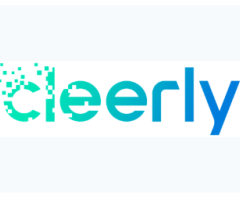October 28, 2008 - The diagnosis and subsequent treatment of cardiovascular disease can be accomplished through a variety of medical imaging modalities, and demonstrating the effectiveness of a multimodality approach is Salinas Valley Memorial Healthcare System.
The system created the Cardiovascular Diagnostic Center at its Ryan Ranch outpatient facility in Monterey County, CA, which uses a full suite of imaging equipment from Toshiba America Medical Systems Inc. Salinas Valley Memorial Healthcare System uses the Toshiba Aquilion ONE computed tomography (CT) system and the Vantage Atlas magnetic resonance (MR) system. In addition, Toshiba’s Aplio Artida ultrasound system is being used by Salinas Valley’s director at his professional practice to further evaluate cardiac patients. The Cardiovascular Diagnostic Center is the only facility in California to use these Toshiba technologies side-by-side to provide imaging with low doses of contrast and radiation, the company said.
“When a patient is displaying a specific set of symptoms, we are capable of imaging them right away on the most appropriate system. That way, we can reduce both the contrast and radiation dose a patient receives,” said Timothy Albert, M.D., director of the Cardiovascular Diagnostic Center and assistant consulting professor of medicine at Duke University.
The Cardiovascular Diagnostic Center acquired the Toshiba Aquilion ONE dynamic volume CT system to perform advanced cardiovascular CT imaging. The Aquilion ONE utilizes 320 ultra-high resolution detector rows (0.5 mm in width) to image the heart in a single gantry rotation. Toshiba said the result is unparalleled in diagnostic imaging today and produces a 4D clinical video showing up to 16 cm of anatomical coverage, enough to capture the entire heart, and show its movement such as blood flow.
“CT is the gold standard for coronary imaging because of the high image resolution and fast acquisition time,” said Dr. Albert. “The rapid, efficient cardiac imaging and the lower radiation dose of the Aquilion ONE CT system was a perfect fit for the new cardiovascular center. The Aquilion ONE is able to lower radiation dosage by up to 80 percent, making CT imaging safer for patients.”
The center will use Toshiba’s Vantage Atlas MR system in the diagnosis of cardiovascular disease and Toshiba’s proprietary contrast-free MR methods to improve patient safety. Unlike some other diagnostic tests, MR shows both anatomy and function, such as blood flow, and is used in analyzing valve structure and heart function. Additionally, MR offers an imaging alternative without any radiation.
“MR has revolutionized the way we look at the heart,” explained Dr. Albert. “New MR technology creates movie-quality images of the heart, which is like the difference between old black and white television versus today’s high-definition television.”
The center is also using Toshiba’s proprietary contrast-free MR techniques, which include Fresh Blood Imaging (FBI), Contrast-Free Improved Angiography (CIA), Time-Spatial Labeling Inversion Pulse (Time-SLIP) and Time and Space Angiography (TSA). The contrast-free protocols are particularly important in imaging vascular disease and patients with kidney dysfunction.
Salinas Valley Memorial Hospital is a Public District Hospital that is part of the Salinas Valley Memorial Healthcare System. The system is an integrated network of health care programs, services and facilities. At the core of the system is a 269-bed acute care hospital with several distinct specializations and programs, including the Regional Heart Program, the Comprehensive Cancer Center, a Level III Neonatal Intensive Care Unit (NICU), Joint Replacement Center, and the Regional Spine Center. Salinas Valley Memorial employs more than 2,200 people and the medical staff includes 265 board-certified physicians across a range of specialties.
For more information: www.medical.toshiba.com


 January 07, 2026
January 07, 2026 









